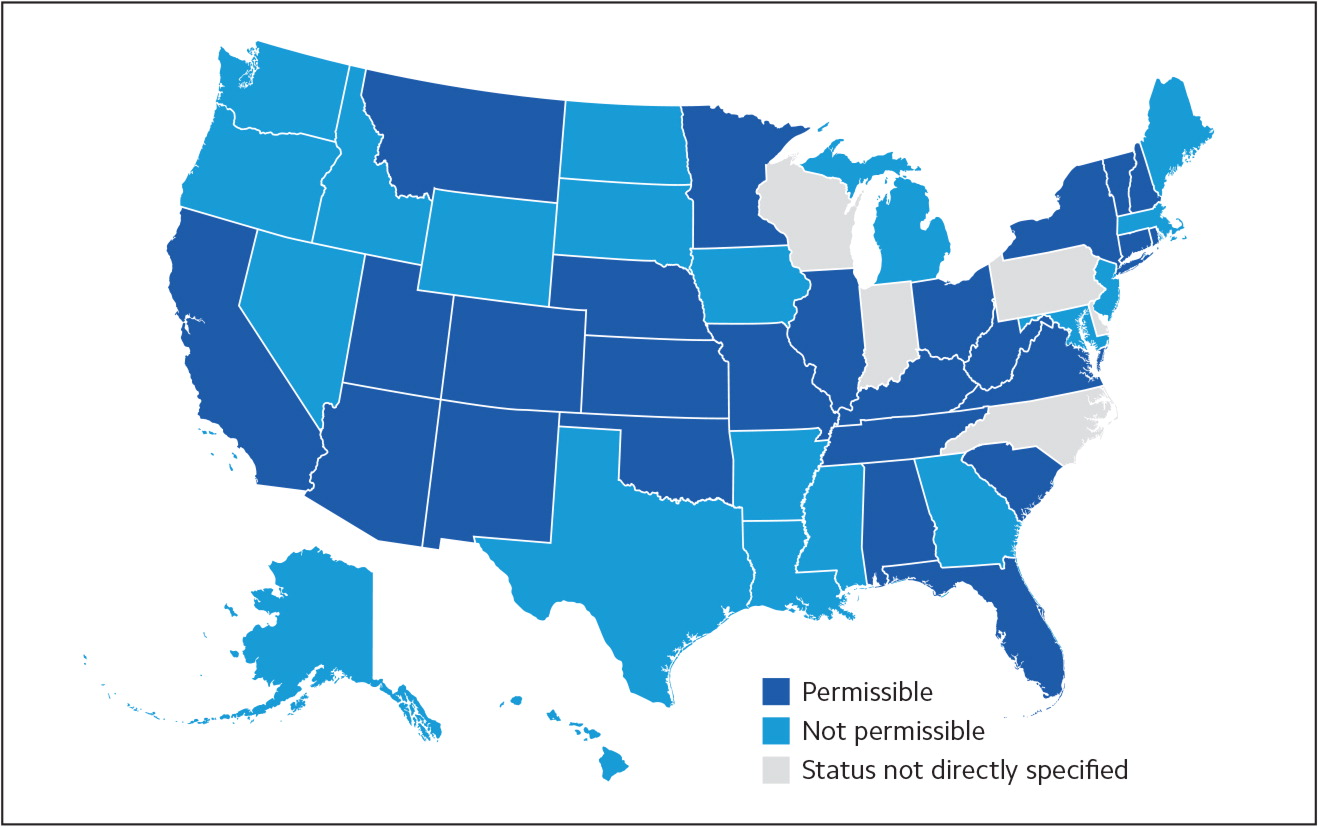
Fam Pract Manag. 2022;29(4):32
CHECK THIS MAP WHEN PRESCRIBING CONTROLLED SUBSTANCES FOR PATIENTS OUT OF STATE
Editor's note: This chart reflects what state boards of pharmacy permitted at the time of publication. Those rules are subject to change over time, and prescribing across state lines may also be affected by state physician licensure and local and federal regulations.
Physicians may be unsure about their ability to electronically send controlled substance prescriptions for patients who are away from home. For example, our clinic recently questioned whether we could prescribe stimulants for a patient away at college.
Our clinical pharmacist reviewed applicable U.S. Drug Enforcement Administration regulations and information from the National Association of Boards of Pharmacy to determine which states allow pharmacies to dispense controlled substances prescribed by doctors in other states. Our findings are summarized in the map below. The map is applicable only to physicians. We did not review regulations for other types of prescribers, which may vary from state to state.

In some cases, the COVID-19 pandemic prompted federal and state governments to relax out-of-state controlled substance prescribing regulations. However, this is subject to change, and a pharmacy may decline to dispense a prescription if local requirements are not met. Calling out-of-state pharmacies before sending electronic prescriptions for the first time may be prudent.
USE TEMPLATES AND SHORTCUTS TO MAKE EHR WORK MORE EFFICIENT
If EHR work is becoming an untenable administrative burden, it may be time to take a step back and determine if templates or shortcuts could make your EHR system more efficient.
Think about the EHR tasks you do most frequently, then explore whether your system has built-in tools to speed up those tasks. If it doesn't, it may be possible for you or a particularly savvy EHR user in your practice to develop your own workarounds, whether it's a custom order set, a pre-scripted note template for a common chronic condition, or keyboard shortcuts for certain words or phrases that you type a lot.
Your EHR vendor may also be able to provide advice or training to make the system more responsive to your needs. Investing some time upfront on improving the EHR's ease of use could yield major time savings in the future.
MAKE EFFECTIVE E-CONSULT REQUESTS
Electronic consults (also called e-consults) help primary care clinicians get answers to low-complexity clinical questions from specialists without the patient seeing the specialist. This usually allows patients to get needed care faster than waiting for a referral appointment. The expectation in most e-consult programs is for specialists to respond in 24–72 hours.
Here are some tips to make the most of e-consults:
Include a specific clinical question. It is not enough to say, “What should I do?” Instead say, “This patient has failed these two medications. Can you suggest a third?” or “She has an abnormal X. What should be the workup after this result?” Examples of e-consult questions appropriate for various specialties are available here.
Don't use an e-consult for an urgent situation. If you need an answer within three hours, call the consultant instead.
If you have EHR capabilities, include pictures of any physical examination abnormality so the specialist can evaluate it.
Write a comprehensive note and make sure it is complete so the consultant does not need to spend a lot of time reviewing the chart.
